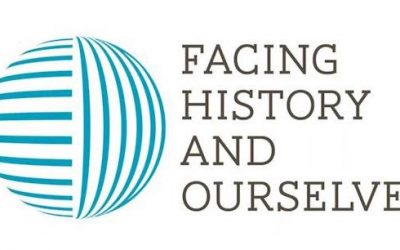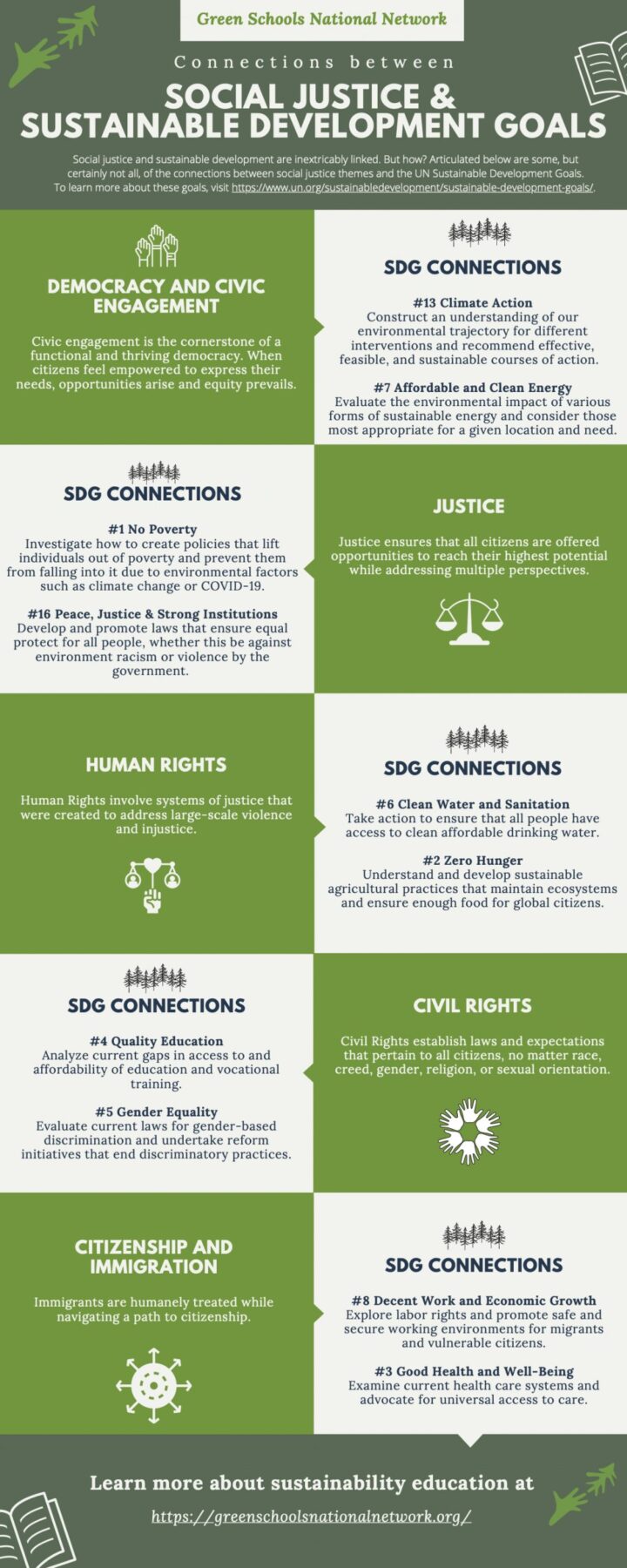At Green Schools National Network (GSNN), we are committed to sustainability education and cultivating environmentally literate students and teachers who use inquiry-, problem-, and project-based pedagogy to understand complex systems, human-to-human connections, and the natural world.
By its nature, this work is situated in a complex, social-political context.
While GSNN has long held the belief that sustainability education is about creating a more just society, we recognize there’s a need to be more explicit in how to view sustainability education through a social justice lens.
In service of this goal, GSNN has identified a selection of social justice resources that you can apply to your sustainability curriculum, as well as your teaching practice.
Introduction to the GSNN Social Justice Resources
What is Social Justice?
The Social Justice Lens
Our aim is to help you cultivate students’ critical consciousness so they can:
- Analyze and understand the social-political context that influences sustainability issues.
- Identify inequities in “everyday social, environmental, economic, and political situations.”
- Develop a lens to “recognize and interrupt inequitable patterns and practices in society.” (Dimensions of Equity, Hammond, 2020)
Teaching Tolerance offers a comprehensive list of Social Justice Standards to support anti-bias education. The Justice Anchor Standards are particularly useful for the purposes of helping students understand the social-political context of the sustainability issues they are exploring. They are as follows:
- Students will recognize stereotypes and relate to people as individuals rather than representatives of groups.
- Students will recognize unfairness on the individual level (e.g., biased speech) and injustice at the institutional or systemic level (e.g., discrimination).
- Students will analyze the harmful impact of bias and injustice on the world, historically and today.
- Students will recognize that power and privilege influence relationships on interpersonal, intergroup, and institutional levels and consider how they have been affected by those dynamics.
Students will identify figures, groups, events, and a variety of strategies and philosophies relevant to the history of social justice around the world.
Leading for Social Justice
Before diving in, we would like to take a moment to offer some pointers that will help you lead this work effectively.
Do your homework. Educate yourself on the history of racism and how to be anti-racist. Doing so will better position you to guide students in understanding and confronting structural and systemic oppression.
- Talking About Race (National Museum of African American History and Culture)
- Me and White Supremacy (Layla Saad) – Available on most public library apps
Be aware of your own biases. Biases are impossible to avoid when you live in a society with structural and systemic inequities, in particular for Black, Indigenous, and People of Color. Take time to reflect on your biases and how to interrupt them when they show up.
- Test Yourself for Hidden Bias (Teaching Tolerance)
Attend to students’ social-emotional needs. This work is demanding and can trigger powerful emotions for students. Create routines and safe spaces for students to process and share how they are feeling. Teach them strategies for managing their emotions.
- 5 Core Competencies for Social-Emotional Learning (Collaborative for Academic, Social, and Emotional Learning)
- Social-Emotional Learning: What Is SEL and Why SEL Matters (Committee for Children / Second Step)
Practice self-care. This will be needed to sustain this work for the long haul.
Hold a big-picture perspective. Educators for social justice show students (in age-appropriate ways) the world as it is. They explore systems of power and oppression with students for the purposes of finding ways to interrupt and dismantle them. These challenges are great. And through the collective action of individuals, change can happen.
We recommend two educational resources for you to refer to as you design and facilitate your sustainability units or lessons through a social justice lens. For each resource, we include a narrative overview and a screencast to help you become familiar with the materials. We believe these are powerful tools that will help you deepen your practice and meet a critical moment in our global history.
IWitness
Overview Developed by University of Southern California Shoah Foundation – The Institute for Visual History and Education, IWitness is a classroom tool that provides teachers and students access to more than 1,500 life stories from survivors and witnesses to the...
Facing History and Ourselves
Overview Facing History and Ourselves aims to “use lessons of history to challenge teachers and their students to stand up to bigotry and hate.” This resource integrates the study of history, literature, and human behavior with ethical decision-making and innovative...
Connections between Social Justice and Sustainability Education
Through the lens of social justice education, students develop critical consciousness about social-political contexts of inequities in “everyday social, environmental, economic, and political situations” and learn to “recognize and interrupt inequitable patterns and practices in society” (Dimensions of Equity, Hammond, 2020). Sustainability is achieved when economic, ecological, and social systems co-exist through a dynamic balancing act. When one system undergoes disruption, it has an impact on the other two systems. All three are inextricably linked.
The examples provided below show how sustainability can be viewed through a social justice lens. Make these connections explicit in your sustainability-related programming to ensure that students, administrators, and families see the interconnected nature of the social, environmental, and economic systems that define our communities. If you like this work, we encourage you to share on social media.



